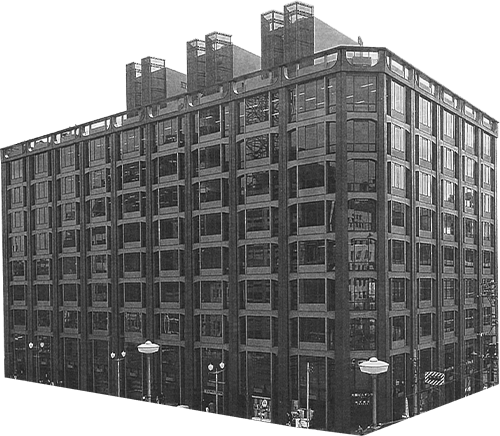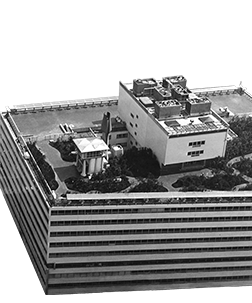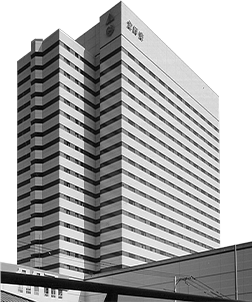 04
1967
04
1967
Tokyo
The Yaesu Daibiru Building
A Bold Project
That Leverages Its Location
as an Urban Gateway
Attracting Tenants from a Long-Term Perspective
The Yaesu Daibiru Building opened in September 1967, but business following its opening did not proceed smoothly. The Japanese economy suffered its biggest postwar recession in 1965 while construction was in progress. Although the economy showed signs of recovery in 1966 due to an economic stimulus package, the occupancy rate was poor due to the spate of new buildings that had previously opened.
Initially, the building had an occupancy rate of 14.4% and was occupied by only four companies, including Rasa Industries and Tokyu Land Corporation. Later, the Yaesu Branch of The Kyowa Bank (later Kyowa Saitama Bank, and now Resona Bank) opened in the building, but the situation was not much better. Nevertheless, Daibiru did not take drastic steps to attract tenants due to the company’s intention of never mixing tenants from different industries in the same building. It was thought that drastic steps to attract tenants could seriously damage its value as a rental office building, so they focused on attracting tenants with a long-term perspective, even if that meant difficult business conditions.
This stance paid off, and the building eventually reached nearly full occupancy with excellent tenants that included Bridgestone Liquefied Gas (now ENEOS GLOBE Corporation) in 1968, and Shell Sekiyu (later Showa Shell Sekiyu followed by a merger with Idemitsu Kosan), Bridgestone Tire (now Bridgestone), NSK, and Takiron Corporation (now C.I. TAKIRON Corporation) in 1969.
The constant attitude that has persisted for all of Daibiru’s buildings has been never to mix tenants from different industries.
-
1927 1931 Hibiya Daibiru Buildings
No. 1 and No. 2 -
2007 International Operations
-
- An Unexpected Discovery of a Good Property
- Mutual Trust and a Long-Term Perspective as Points of Agreement
- The Acquisition of a Property in Hanoi Through Unity of Philosophy
- Implementing Daibiru Quality Through Building Renovations
- Challenges in Australia, Our Second Overseas Expansion Target
- The Discovery of 275 George Street
- Difficult Contract Negotiations with JHG
- Overcoming Several Unexpected Difficulties
-



